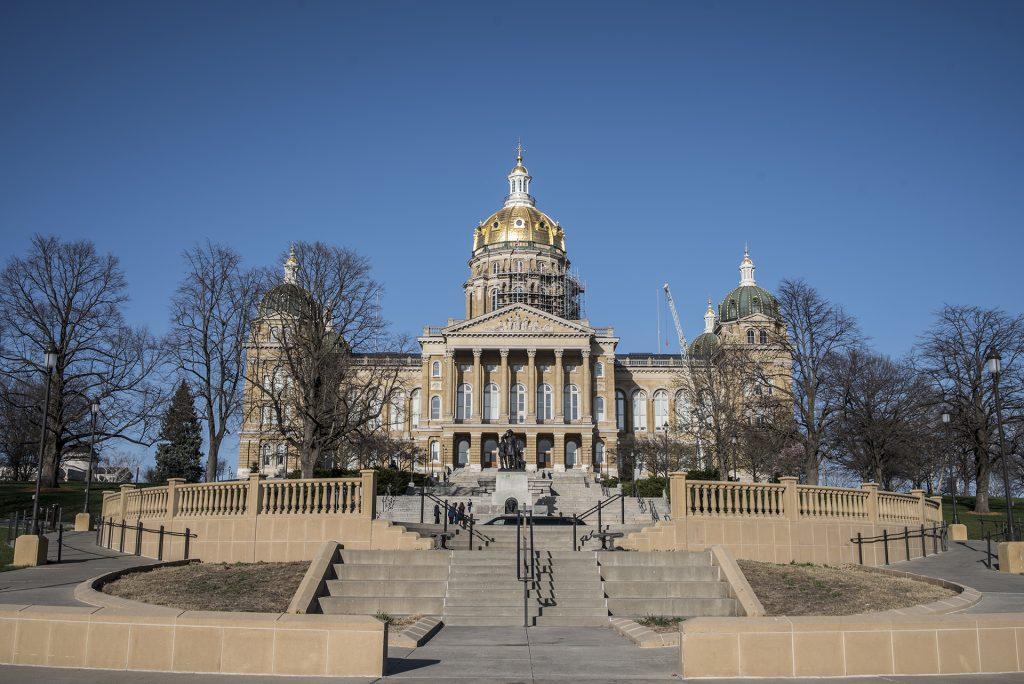The Supreme Court has heard arguments for a case that is meant to determine if legislative redistricting in Texas were drawn in a discriminatory fashion.
The April 24 case marks the third gerrymandering case the high court has heard this term, the two others coming from Wisconsin and Maryland.
Gerrymandering — a form of redistricting meant to tip election results toward one side — has been practiced almost since the nation’s inception by U.S. political parties (no matter their name), said David Canon of the Elections Research Center at the University of Wisconsin-Madison. However, Iowa manages to avoid this thorny issue through its unique redistricting model.
RELATED: Weigel: U.S. must follow Iowa on gerrymandering
In Iowa, the Legislative Service Agency, a nonpartisan state organization that provides legal and fiscal advice to the Legislature, has taken on redistricting. Edwin Cook said the agency submits both legislative and congressional district maps to the Legislature each year following a census. Districts must be reasonably even in population, attempt to follow existing city and county boundaries, be fairly compact, and be contiguous.
“It’s a blind process; we don’t know how it’s going to have an impact over that decade, but essentially what it means is that the plan does not put the thumb on the scale for one party or the other in regards to congressional and legislative elections,” Cook said.
After drawing up the plan, the agency sends it to the Legislature, which can either adopt it or reject it, with no admendments allowed. If the Legislature scraps the first plan, the agnecy comes up with a second; if that one doesn’t pass, the state Supreme Court draws up the redistricting. And that plan is final. In the four redistricting cycles beginningin 1981, the Legislature has always passed the agency’s plan, Cook said.
On top of sidestepping partisan biases, the Iowa model also may inadvertently lead to more competitive districts and a higher turnover in lawmakers, said Timothy Hagle, an associate professor of political science at the University of Iowa.
Barry Burden, the director and founder of the Elections Research Center, said that n most other states, redistricting is handled by the legislators, which can lead to complications with controversial partisan biases, political infighting as groups jockey for position, and expensive court cases meant to determine if the process used was fair.
“The Iowa model is really just on a different plane from what most states are doing,” he said. “… The Iowa version of the process is unique because it delegates the job essentially to an existing state agency, and it’s done with such efficiency, and minimal conflict, and no litigation, it really is just a model for a different kind of way to do the process altogether.”
RELATED: Event dissects America’s political redistricting
Whether the Iowa redistricting model would work well in other states has been a point of recent discussion, under the shadow of Supreme Court cases that highlight the pervasiveness of gerrymandering.
Justin Levitt, an associate dean for research and professor of law at Los Angeles’ Loyola Law School, doubts whether the model would be as efficient if it was transplanted, citing Iowa’s relatively well-portioned and homogeneous population as being especially conducive to the system’s relative success.
“Compared to Illinois, the political demography of Iowa is spread out a lot more evenly throughout the state, and that takes some of the high stakes out of redistricting,” he said. “Not all of it, not by a long shot, but it turns out that when you slice up Iowa, you get things that look more or less like Iowa, no matter how you slice them, and in a lot of other states, that’s emphatically not true.”
With this balance of populations comes an easier form of redistricting, which means the Voting Rights Act of 1965, which demands that redistricting practices not be discriminatory, is not as prominent a consideration, Cook said.
RELATED: Author says gerrymandering endangers U.S. future
Levitt also pointed to Iowa’s political culture as a factor in the redistricting model progressing smoothly.
“In a lot of other places, in the norm that you shouldn’t interfere with a nonpartisan or a structure outside the current political system, even if it hurts you, is not quite as highly developed as it is in Iowa,” he said. “Iowans seem to prize the fact that the institution generally seems to work well for the public in a way that the legislatures of other states would be far less likely to give a similar thing a chance to work.”



